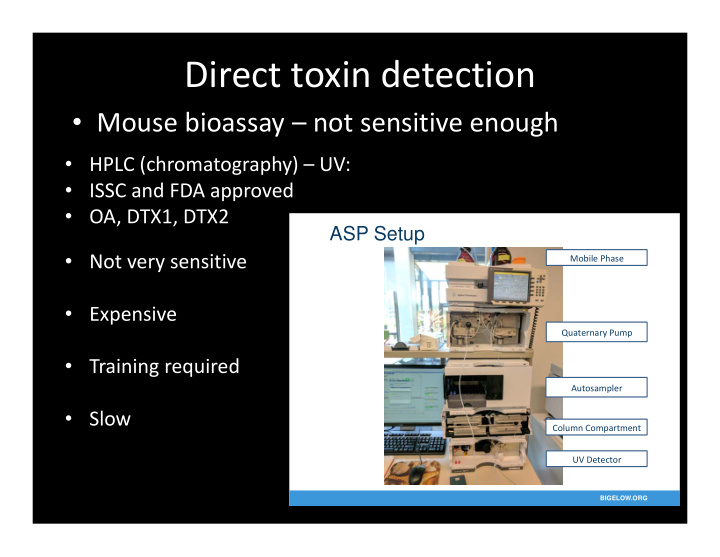



Direct toxin detection • Mouse bioassay – not sensitive enough • HPLC (chromatography) – UV: • ISSC and FDA approved • OA, DTX1, DTX2 ASP Setup • Not very sensitive Mobile Phase • Expensive Quaternary Pump • Training required Autosampler • Slow Column Compartment UV Detector BIGELOW.ORG
Direct toxin detection • LC ‐ MS/MS • More sensitive – also allows ‘routine’ seawater analysis • More expensive • More training • Research tool Might be useful for • monitoring multiple toxins
Direct toxin detection Screening approaches • Immuno ‐ approaches: ‐ Lateral flow ‐ +/ ‐ no equipment (Scotia kits) ‐ ELISA: colour change / fluorescence requires some equipment generally
Direct toxin detection • Physiological approach: ‐ Receptor binding assays: radioistope detection measures ‘total’ toxicity • Portable approaches: ‐ Lateral flow ‐ + (Scotia kits) ‐ Surface plasmon resonance
Recommend
More recommend